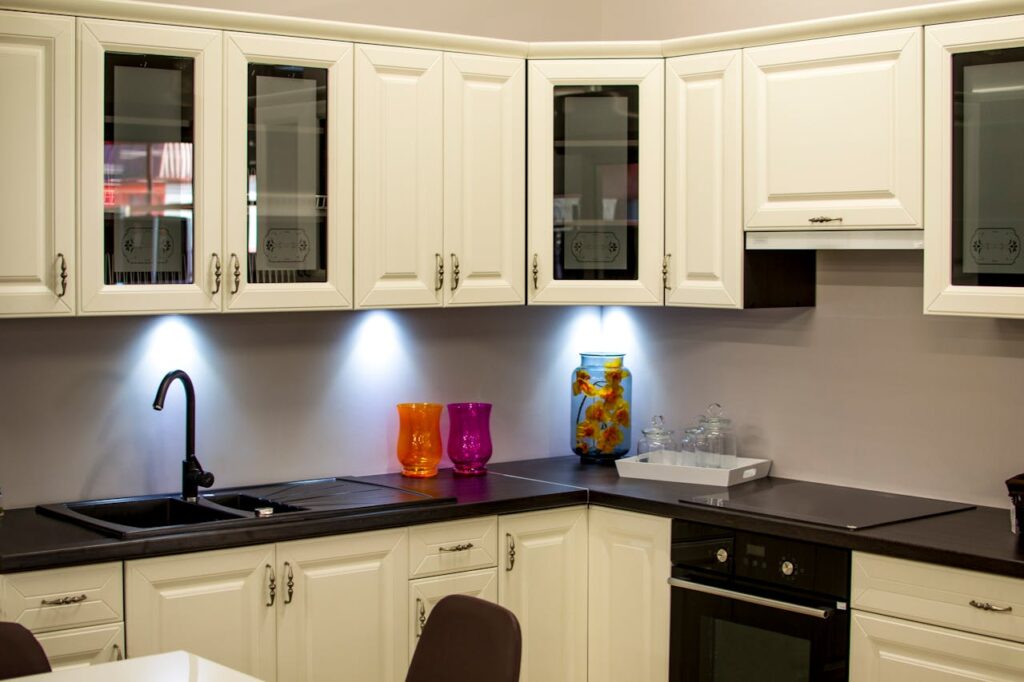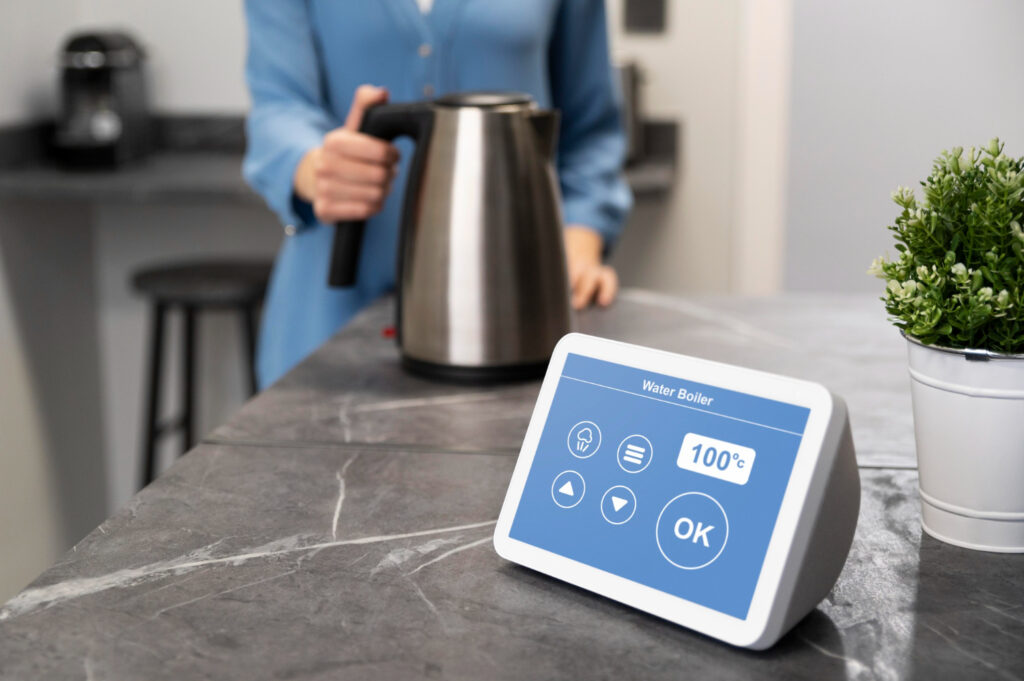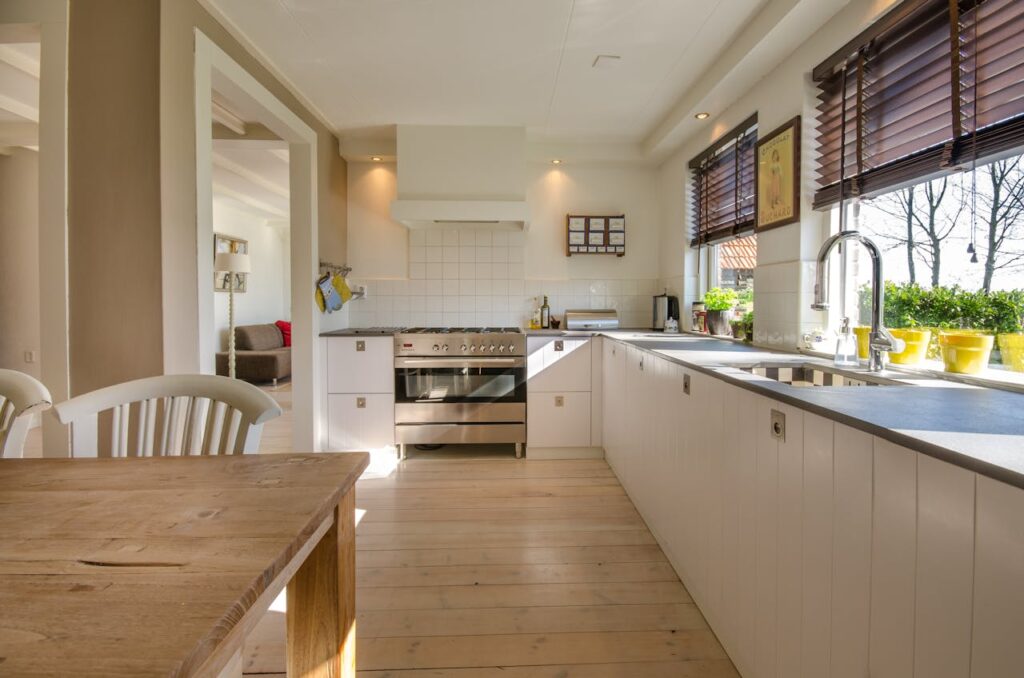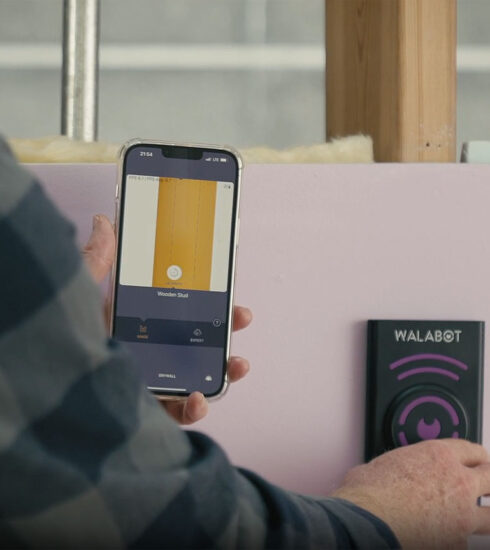7 Senior Kitchen Safety Modifications for Safer Cooking at Home
7 Kitchen Modifications That Help Seniors Cook Safely
Cooking Should Be Safe, Not Stressful
The kitchen is one of the most used spaces in any home, but for seniors, it can also be one of the most dangerous. Slippery floors, poor lighting, and hard-to-reach storage can turn everyday cooking into a risky task. If you’re caring for an aging parent, making a few key adjustments, like these 7 senior kitchen safety modifications, can help them cook safely and comfortably.
Simple changes—like better lighting, non-slip flooring, and senior-friendly appliances—can reduce accidents and make the kitchen easier to use. Whether your loved one enjoys cooking daily or just wants to maintain their independence, these senior kitchen safety modifications will help them stay safe while preparing meals.
Here are seven practical upgrades that can make a big difference.
1. Improve Accessibility
A kitchen that’s hard to navigate is an accident waiting to happen, especially for seniors. Making a few simple changes can go a long way in preventing unnecessary strain and reducing the risk of falls.
Keep Everything Within Reach
Bending down to reach heavy pots or stretching for high cabinets can be dangerous. Here’s how to make things easier:
- Rearrange storage so frequently used items—like plates, cups, and cooking essentials—are at waist level.
- Install pull-out shelves in cabinets and pantries to avoid reaching too far back.
- Use a lazy Susan in corner cabinets to make items more accessible.
Upgrade Cabinets and Drawers
Traditional cabinet knobs and handles can be tough for seniors with arthritis or limited grip strength. Instead:
- Swap out round knobs for D-shaped handles that are easier to grab.
- Consider soft-close drawers to prevent slamming and reduce strain.
- Use clear storage bins to keep smaller items organized and visible.
Make Faucets Easier to Use
Turning a stiff faucet can be frustrating. Upgrading to a user-friendly design can make all the difference:
- Install a lever-style or touchless faucet to make turning water on and off effortless.
- Adjust water temperature settings to prevent scalding.
Small changes like these make daily tasks easier and reduce the risk of accidents in the kitchen. Ready for the next section?
2. Enhance Lighting
Dim lighting in the kitchen can lead to spills, burns, and even falls. As eyesight changes with age, making sure the kitchen is well-lit is one of the simplest and most effective senior kitchen safety modifications.
Increase Overall Brightness

A dark kitchen is a dangerous kitchen. Boost the lighting with these easy upgrades:
- Swap out old bulbs for bright LEDs—they last longer, use less energy, and provide better visibility.
- Add lighting to key areas like countertops, stovetops, and sinks.
- Use natural light by keeping curtains open or switching to sheer blinds.
Add Task Lighting
General lighting isn’t always enough, especially when chopping vegetables or reading labels. Task lighting can make all the difference.
- Under-cabinet lights brighten up work areas and reduce shadows.
- Stick-on LED puck lights are a great option for extra light without complicated installation.
- Adjustable desk lamps can be placed near prep areas for extra focus.
Upgrade Light Switches
Standard light switches can be tricky for those with arthritis or limited mobility. A few small changes can make turning on the lights effortless.
- Install rocker switches that require just a simple push instead of a twisting motion.
- Consider motion-sensor lights in frequently used areas to remove the need for switches altogether.
- Place switches near entrances so no one has to walk into a dark room.
Good lighting doesn’t just make cooking easier—it makes the whole kitchen safer.
3. Reduce Fall Risks
Slips and falls are a big concern in the kitchen, especially with slick floors, spills, and unexpected obstacles. A few simple changes can make a huge difference in keeping the space safe and easy to navigate.
Use Non-Slip Flooring
Slippery floors are a serious hazard, but switching to a safer surface can help:
- Install slip-resistant flooring like textured vinyl, cork, or rubber.
- Use non-slip mats or rugs near sinks and stoves to add extra grip.
- Secure rugs with double-sided tape or non-slip backing to prevent slipping.
Keep the Floor Clear
A cluttered floor can be dangerous, especially for seniors with mobility issues.
- Keep pathways free of obstacles like pet bowls, stools, and extra furniture.
- Use a rolling cart for meal prep instead of carrying heavy items across the kitchen.
- Make sure electrical cords are tucked away to prevent tripping.
Clean Up Spills Immediately
Even a few drops of water on the floor can lead to a dangerous fall. A few smart habits can help avoid accidents:
- Place absorbent mats near the sink to catch stray water.
- Keep a mop or towel handy to quickly clean up any spills.
- Use spill-proof containers to prevent messes in the first place.
Reducing fall risks doesn’t just make the kitchen safer—it also gives peace of mind to family members caring for elderly loved ones.
4. Upgrade Appliances and Tools
Using the wrong appliances or struggling with heavy cookware can turn cooking into a frustrating and even dangerous task. Swapping out old kitchen tools for safer, more senior-friendly options makes cooking easier and reduces the risk of burns, cuts, and accidents.

Choose Senior-Friendly Appliances
Modern appliances come with features designed for safety and convenience. When upgrading kitchen gadgets, look for:
- Automatic shut-off features on stovetops, ovens, and coffee makers to prevent overheating or fires.
- Induction cooktops that heat only when a pan is present, reducing burn risks.
- Microwaves with easy-to-read controls and large buttons instead of small, hard-to-press keypads.
- Toasters and kettles with auto shut-off to prevent overheating and fire hazards.
Use Ergonomic Utensils and Cookware
Heavy pots and awkward utensils can be tough to handle. Switching to ergonomic options makes cooking safer and more enjoyable.
- Lightweight pots and pans with two handles for better grip and control.
- Utensils with large, padded handles that are easier to hold for those with arthritis.
- Rocking knives or electric choppers to make food prep easier on weak hands.
- Silicone oven mitts with extra grip to prevent burns and dropped dishes.
Simplify Food Preparation
The right kitchen tools can make a big difference in reducing strain and making cooking easier:
- Electric jar openers eliminate the struggle of twisting off tight lids.
- Cut-resistant gloves prevent accidental knife injuries.
- Pre-cut or easy-to-open packaging reduces the need for sharp tools.
Making these changes helps seniors stay independent in the kitchen without the frustration of difficult appliances and tools.
5. Install Safety Features
The kitchen is full of potential hazards, from sharp objects to hot surfaces. Adding simple safety features can help prevent burns, falls, and fires, making cooking a safer experience for seniors.
Add Supportive Fixtures
Balance and stability can be a challenge, especially when standing for long periods or moving between different work areas. A few well-placed supports can make all the difference:
- Install grab bars near the stove and sink to provide stability when cooking or washing dishes.
- Use a sturdy step stool with a handle if reaching high shelves is unavoidable.
- Place a cushioned anti-fatigue mat in front of the sink and stove to reduce strain on joints.
Fire Safety Precautions
Cooking-related fires are a serious risk, but taking a few extra precautions can help prevent disasters:
- Keep a fire extinguisher in the kitchen and make sure it’s easy to access.
- Install a smoke detector near the kitchen and test it regularly.
- Use an automatic stove shut-off device to turn off burners after a set time.
- Avoid loose, flowing clothing when cooking to reduce fire hazards.
Emergency Preparedness
Even with the best precautions, accidents can happen. Being prepared for emergencies can make a big difference:
- Place emergency contact numbers on the fridge in large, easy-to-read print.
- Consider a medical alert system that can be activated in case of a fall or injury.
- Make sure the kitchen has a clear exit path in case of a fire.
Adding these safety features gives peace of mind to both seniors and their family members, knowing the kitchen is a safer place to cook.
6. Modify the Cooking Area

Making a few adjustments to the cooking space can reduce strain and lower the risk of burns, spills, and other accidents. A well-organized, senior-friendly kitchen makes cooking more enjoyable and less stressful.
Adjust Counter Heights
Standard counter heights may not work for everyone, especially for seniors who use wheelchairs or have trouble standing for long periods. A few modifications can help:
- Lower a section of the counter to allow seated meal prep.
- Use a rolling cart or table as a flexible workspace that can be moved around as needed.
- Install pull-out cutting boards that slide out from cabinets for easier use.
Make Cooking Safer
Burns and spills are some of the most common kitchen injuries. A few simple changes can reduce the risk:
- Use an induction cooktop instead of a traditional stove to prevent accidental burns.
- Turn pot handles toward the back of the stove to prevent them from being knocked over.
- Use a wall-mounted oven to eliminate the need for bending down.
- Choose a slow cooker or air fryer for safer, low-risk cooking alternatives.
Organize the Stove Area
Keeping the cooking space clutter-free makes it easier to work safely:
- Store cooking utensils in an easy-to-reach spot to avoid stretching over a hot stove.
- Keep flammable items like dish towels and paper towels away from heat sources.
- Use easy-to-read burner dials and markings to avoid confusion.
Making these small adjustments can help seniors cook comfortably and safely, keeping them independent in the kitchen.
7. Use Contrasting Colors
As vision declines with age, distinguishing between objects and surfaces can become challenging. Adding contrast to the kitchen can make it easier for seniors to see edges, locate items, and work more safely.
Improve Visibility with Contrast
Simple color changes can help seniors navigate the kitchen with ease:
- Use light-colored countertops with dark-colored cabinets (or vice versa) to make edges stand out.
- Choose bright, high-contrast plates and bowls to make food easier to see.
- Apply colored tape or edging on counters and steps to highlight transitions.
- Opt for dark-colored cutting boards for light foods and light-colored boards for dark foods.
Make Appliances and Controls Easier to See
Many kitchen accidents happen because controls and buttons are hard to read. Fixing this is easy:
- Use appliances with large, high-contrast buttons and digital displays.
- Apply bold labels or stickers to frequently used buttons and dials.
- Choose a microwave with a bright, easy-to-read LED screen.
Organize Storage with Color Cues
Color coding isn’t just for filing cabinets—it works great in the kitchen too.
- Use color-coded measuring cups and spoons to make cooking more intuitive.
- Label pantry shelves with different colors for easy identification.
- Choose colored drawer organizers to separate utensils and tools clearly.
These small tweaks can make a big impact, helping seniors cook with confidence while reducing the risk of spills and mistakes.
Make Changes Slowly
Making the kitchen safer doesn’t have to mean a complete remodel. Small changes—like better lighting, non-slip flooring, and easy-to-reach storage—can make a huge difference in senior kitchen safety modifications.
By making these updates, family members can help their elderly loved ones stay independent in the kitchen while reducing the risk of accidents. Whether it’s switching to safer appliances, adding grab bars, or simply rearranging items for better accessibility, each modification helps create a more comfortable and secure space.
If you’re caring for an aging parent, take a look around their kitchen and see what improvements can be made today. Even one or two small changes can make cooking safer and more enjoyable for them.
FAQ: Senior Kitchen Safety Modifications
1. What are the most important senior kitchen safety modifications?
The most important modifications include improving accessibility (keeping items within reach), enhancing lighting, reducing fall risks with non-slip flooring, upgrading to senior-friendly appliances, and installing safety features like grab bars and automatic shut-offs. These changes help create a safer and more functional kitchen environment.
2. What type of flooring is safest for seniors in the kitchen?
Slip-resistant flooring like textured vinyl, cork, or rubber is the best option for seniors. If replacing the flooring isn’t possible, using non-slip mats with secured edges can provide extra grip and prevent falls.
3. How can I make kitchen appliances easier for seniors to use?
Look for appliances with large, easy-to-read buttons, automatic shut-off features, and simple controls. Induction cooktops, slow cookers, and air fryers are safer alternatives to traditional stovetops and ovens.
4. How can I improve kitchen lighting for an elderly parent?
Use bright LED lights throughout the kitchen, add under-cabinet lighting to reduce shadows, and install motion-sensor or rocker switches for easy operation. Ensuring the space is well-lit helps seniors see clearly and avoid accidents.
5. What are some small, inexpensive changes that make a big impact?
Simple adjustments like adding non-slip mats, rearranging cabinets for better accessibility, switching to ergonomic kitchen tools, and applying high-contrast color cues can significantly improve safety without major renovations. Even small upgrades make cooking easier and safer for seniors.





1 Comment
10 Assistive Kitchen Gadgets Every Senior Should Have
3 weeks ago[…] Bending down to pick something up or reaching for an item on a high shelf can be risky for seniors. Reacher/grabber tools help prevent falls and strain by allowing seniors to grab items without stretching, bending, or climbing onto stools. […]